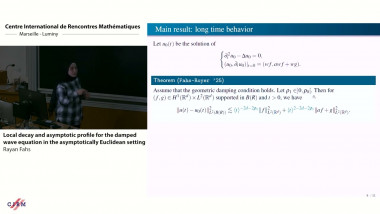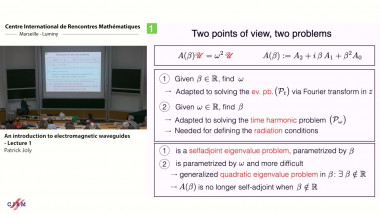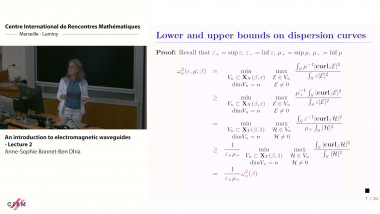Apparaît dans la collection : Mathematical aspects of physics with non-self-adjoint operators / Les aspects mathématiques de la physique avec les opérateurs non-auto-adjoints
We consider an acoustic waveguide modeled as follows:
$ \left \{\begin {matrix}
\Delta u+k^2(1+V)u=0& in & \Omega= \mathbb{R} \times]0,1[\\
\frac{\partial u}{\partial y}=0& on & \partial \Omega
\end{matrix}\right.$
where $u$ denotes the complex valued pressure, k is the frequency and $V \in L^\infty(\Omega)$ is a compactly supported potential.
It is well-known that they may exist non trivial solutions $u$ in $L^2(\Omega)$, called trapped modes. Associated eigenvalues $\lambda = k^2$ are embedded in the essential spectrum $\mathbb{R}^+$. They can be computed as the real part of the complex spectrum of a non-self-adjoint eigenvalue problem, defined by using the so-called Perfectly Matched Layers (which consist in a complex dilation in the infinite direction) [1].
We show here that it is possible, by modifying in particular the parameters of the Perfectly Matched Layers, to define new complex spectra which include, in addition to trapped modes, frequencies where the potential $V$ is, in some sense, invisible to one incident wave.
Our approach allows to extend to higher dimension the results obtained in [2] on a 1D model problem.














